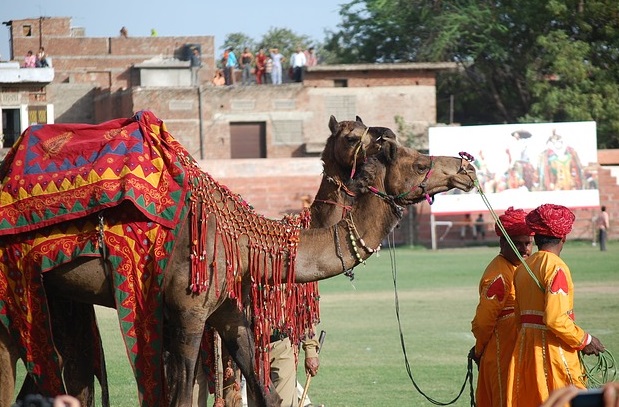Happy Wednesday! It's Wednesday-Hump-Day... the halfway point of the
workweek. The phrase 'Hump Day' became popular during the 1960s and
since then the camel has been the unofficial Hump Day mascot. How much
do you know about camels? Why is the camel the Hump Day mascot?
Keep reading to learn more about these fascinating animals!
There are two types of camels.
If a camel has one hump, it's a dromedary. If it has two humps, it's a
Bactrian camel. The number of humps on a camel has nothing to do with
whether or not the camel is male or female. There are male and female
dromedaries and male and female Bactrian camels.

Camels are in the Camelidae family.
Camels are in the same family as llamas, alpacas, guanacoes,
and vicuñas. Camelidae are large herbivorous animals with long
legs and necks. They also have three stomachs to digest their food!
Camels live in deserts where the climate is hot and dry.
Camels can be found in the deserts of North Africa, the Middle East, and Central Asia. They have evolved to live in the desert. They have long eye leashes to keep the blowing sand out of their eyes, long necks to help them reach leaves high in the bushes, thick rubbery lips to eat prickly plants, and thick hairy skin to protect them during sandstorms.The earliest known camel was the protylopus.
The protylopus lived 40 to 50 million years ago in what is now South Dakota, USA. It was a small camel that lived in the woodlands and cooler climates, unlike the camels that live in the deserts today. Some sources say that the protylopus was as small as a rabbit; others as small as a 50-pound dog! The protylopus went extinct 12,000 years ago.Camels do NOT store water in their humps.
They store fat in their humps. The fat in their humps helps them survive the harsh conditions of the desert. When food and water are scarce, the camels' bodies will burn the fat for energy. As the fat is burned off, their humps get smaller.
Camels are the unofficial mascot of Wednesday-Hump-Day because of their
humps. Silly, eh?
Camels were domesticated 5,000 years ago.
Humans use camels for transportation and to carry things. They are also used for their meat, milk, and wool. Some camels are even used for entertainment purposes... like camel racing!Wild Bactrian camels are critically endangered.
Scientists estimate 900 wild Bactrian camels are left in the wild. They can be found in remote places in China and Mongolia. Wolf predation, hunting, illegal mining, and cross-breeding with domestic camels are the largest threats to them... with humans being the largest threat of all.
Did you enjoy learning new facts about camels? If so, check out these blog
posts for more fun facts about other animals:
- Book: Raja's Pet Camel: The Magic of Hope Anita Nahta Amin
- Factoids: Fun Facts About Groundhogs
- Factoids: Fun Facts About Reindeer
- Factoids: Fun Facts About Rhinoceroses
- Factoids: Fun Facts About Honey Bees
- Factoids: Fun Facts About Sloths







